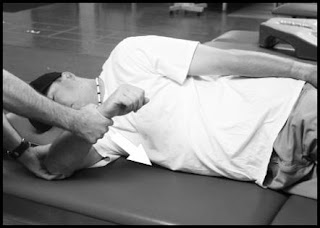Which is better for clinical application of posterior capsule stretch- The Sleeper stretch or the Cross body stretch?

 Launder KG et al evaluated the acute effects of "sleeper stretches" on shoulder ROM. In their study sleeper stretches produced a statistically significant acute increase in posterior shoulder flexibility. However these authors explain that these acute changes in motion may not be clinically significant.
Launder KG et al evaluated the acute effects of "sleeper stretches" on shoulder ROM. In their study sleeper stretches produced a statistically significant acute increase in posterior shoulder flexibility. However these authors explain that these acute changes in motion may not be clinically significant.Because of this recently expressed the belief that the sleeper stretch is better than the cross-body stretch to address glenohumeral posterior tightness because the scapula is stabilized McClure P et al compared changes in shoulder internal rotation range of motion (ROM), for 2 stretching exercises, the "cross-body stretch" and the "sleeper stretch," in individuals with posterior shoulder tightness. The sample consisted of 54 asymptomatic subjects (20 males, 34 females).
The groups:
1. The control group (n=24) consisted of subjects with a between-shoulder difference in internal rotation ROM of less than 10 degrees.
2. Experimental groups ware those subjects with more than a 10 degrees difference. 2 intervention groups are formed i.e. the sleeper stretch group (n=15) or the cross-body stretch group (n=15).
Findings:
1. The cross-body stretch in individuals with limited shoulder internal rotation ROM appears to be more effective than no stretching in controls.
2. Improvement in internal rotation from the cross-body stretch was greater than for the sleeper stretch and of a magnitude that could be clinically significant.
Reference:
1. J Orthop Sports Phys Ther. 2007 Mar;37(3):108-14.
2. J Athl Train. 2008 Jul-Aug;43(4):359-63.


Comments
Post a Comment